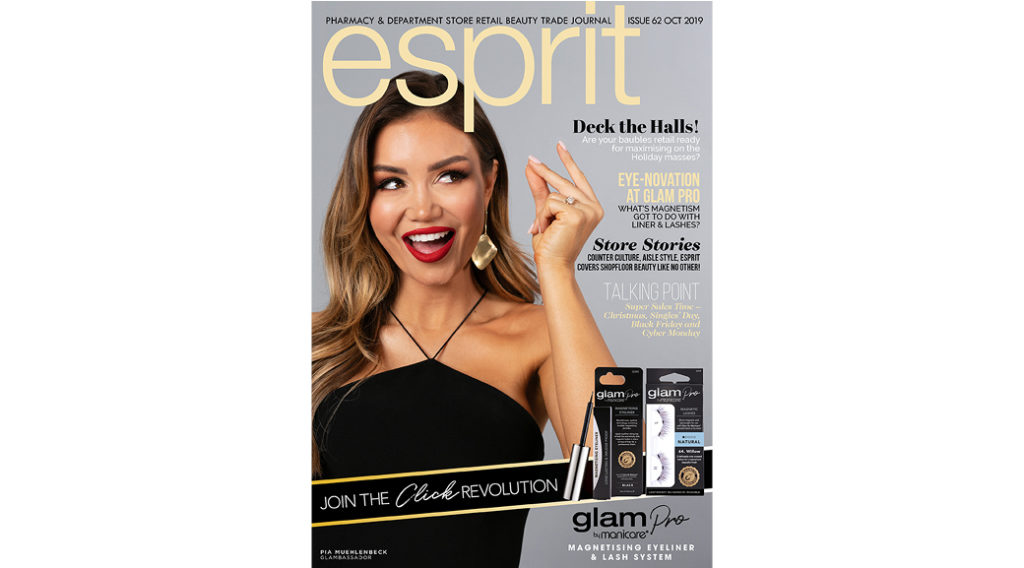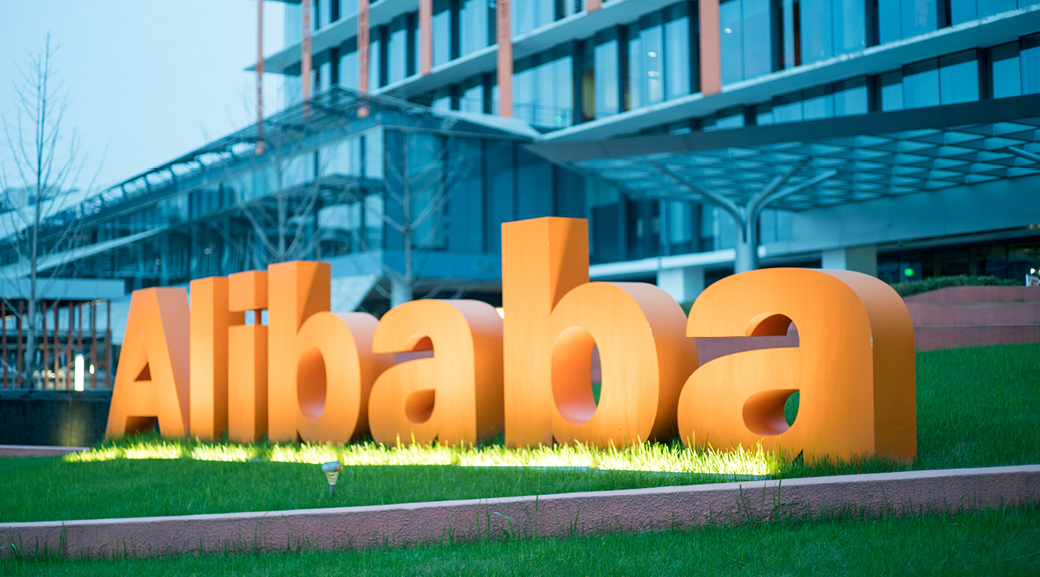Words by Elisabeth King
Over the past decade the growth of the Chinese beauty market has been little short of volcanic. According to a recent report from Euromonitor, beauty and personal care sales in China are predicted to reach US$62 billion by the end of next year. Australian beauty brands and retailers have been on the front foot in taking advantage of the new goldmine through daigous (Chinese personal shoppers), mega online shopping events and flagship stores on Alibaba and other major e-commerce giants.
In 2018 Alibaba Singles’ Day yielded another record result – a 27 per cent increase in sales to AUD$42.7 billion of gross merchandise value. Australia retained its number four ranking among the top 10 nations selling into China during the world’s largest shopping festival, behind Japan, the US and South Korea. Natural skincare was one of the fastest-growing categories and the most sought-after personal care products included face masks, serums, face washes, toners and makeup removers. DU’IT, one of Australia’s favourite dry treatment skincare brands, for example, sold AUD$2.5 million worth of products to solidify its position as one of the top five per cent of Australian-made brands on Alibaba’s network.
JD.com’s 6.18 Shopping Event Posts Record Results / Global Brands Dominate Prestige Beauty Market
JD.com is the other major titan of Chinese e-commerce and retailers like Chemist Warehouse repeated their Singles’ Day success during the online giant’s 6.18 shopping festival in June as total sales reached a record-breaking US$24.2 billion this year. China is the world’s largest e-commerce market with sales expected to reach US$1.6 trillion next year and beauty is one of the top five categories.
Although many Australian brands have set up flagship stores, expanding into China is no easy ride. Austrade, Australia Post and the Australia-China Council have become strong partners and facilitators in helping companies of all sizes become China-ready. Alibaba, JD.com and other majors are not simply sales channels, they also act as branding springboards for retailers and brands to pursue their strategies in China.
Global international brands dominate the prestige beauty market in China with a massive 92 per cent market share in 2017, reports the Hong Kong Trade Development Council. The top end of the market has enjoyed rapid double-digit growth over the past two years and has a 31 per cent market share. The two giants duking it out for market leadership in the prestige sector are L’Oréal Luxe, with its stable of brands including Lancôme, YSL Beauty, Biotherm, Kiehl’s and Giorgio Armani, and Estée Lauder through La Mer, Clinique, M.A.C and Bobbi Brown. L’Oréal has the edge and the Asia/Pacific region is the multinational’s number one regional market. Estée Lauder reached the US$1 billion sales milestone for the first time in the Asia/Pacific region early in the year.
The Unstoppable Rise of C Beauty
But Chinese brands are a major force, accounting for 46 per cent of the skincare market and 44 per cent of colour cosmetic revenues. There’s nothing new about the phenomenon with key domestic brands dating back to the 19th and mid-20th centuries. The largest Chinese beauty brands include Vive and Herborist, owned by Jahwa; Chando, Maysu, Botanical Wisdom and Insea, owned by Jala; Hanshu, One Leaf, Sonia and Red Elephant, owned by Chicmax; Pechoin and Inoherb. L’Oréal Paris, Olay, Nivea and Dabao, acquired by Johnson & Johnson in 2008 for US$300 million, are among the top 10 masstige skincare brands.
The Chinese government’s program – ‘Made in China 2025’ – which focuses on encouraging local industries to lift their quality standards has strongly impacted the rise of domestic beauty brands. As has an emphasis on China’s historical and cultural heritage, which is amplified by movies and TV shows.
C-Beauty, as the domestic industry has been dubbed, is continuing to gain traction at a rapid pace. A survey by Kantar, one of the world’s leading data and insight companies, revealed that three out of four Chinese consumer respondents purchased beauty products from a Chinese brand in the average six months and 50 per cent indicated it was the first time they had bought C-Beauty items. The survey also reported that 40 per cent of consumers were willing to choose C-Beauty in the future and close to 90 per cent would consider a repeat purchase.
The success of C-Beauty brands doesn’t rest solely on price. Gen Z consumers, for example, consider C-Beauty products to be innovative, high quality and also contain home-grown herbal ingredients. The leading brands partner with A-list Chinese celebrities and KOLs (key opinion leaders) on the dominant social media channels and apps such as Weibo, Little Red Book and WeChat. Understanding and using the social media platforms is also critical to the success of international brands. There are 822 million Internet users in China and 788 million access it through mobiles and smartphones. An increasing number of budget-conscious consumers also view C-Beauty products as cheaper me-toos of imported global brands.
Skincare Remains Dominant But More Chinese Using Makeup Growing Interest in Niceh and Organic Brands
Skincare remains the standout category in China with a 70 per cent market share. Cosmetics account for just over 25 per cent of the country’s skincare and personal care sales, reports e-commerce researcher Ebrum. Lipstick and BB creams are the most widely-used products and prestige brands such as Giorgio Armani, YSL Beauté and M.A.C derive 80 per cent of their revenues in China from lipstick.
The lippie craze continues to surge, but multinationals have been working hard to get the Chinese to use other makeup items. The push is succeeding, thanks to apps, AI and video tutorials by major influencers. Mintel reports that more than 40 per cent of Chinese makeup users are inspired by celebrities and influencers when buying makeup. Kantar Retail says that 35 per cent of consumers added an additional item and steps to their makeup routines in 2017/2018, fueling growth of 56 per cent in the colour cosmetic market. Foundation and eyeshadow experienced the most significant growth, notes the growth consultancy.
Chinese consumers are now among the most sophisticated, and knowledgeable in the world and there has been an upsurge of interest in niche brands. The big international names remain top-of mind with 69 per cent of Chinese consumers preferring well-known brands. But a new report from Reuters:Intelligence reveals that 85 per cent of Chinese women surveyed were curious about niche and indie brands.
There’s nothing new about natural and organic beauty and skincare in China. Some of the oldest domestic brands are based in traditional Chinese medicine. But there has been an upsurge of interest in overseas brands with strong natural credentials. A major stumbling block is that there is no official seal of approval, following the cancellation of certification by the Chinese Food & Drug Administration in 2012. To succeed, a brand must be authentic and communicate its brand story across all touchpoints. Fortunately, Australian brands have leverage through people of Chinese heritage living in Australia and local daigous and the widely-held belief in China that Australia is a leader in natural, organic and trend-driven products.
A travel retail presence and strategy are particularly important as a showcase and sales channel because the Chinese are the number one spenders in global duty-free. Asia/Pacific duty-free and travel retail sales rose 14.2 per cent in 2018 to US$35.2 billion. Over 50 cents in every dollar spent went to fragrance or cosmetic purchases to reach annual sales of US$18 billion last year. Fears that China’s new e-commerce law, introduced in January, would crimp the spending of corporate and individual daigous and travel guides have proved groundless so far. But retailers are still keeping a weather eye on sales and growth.
This feature first appeared in esprit Magazine Australia October 2019 print.

For more information on subscribing to esprit print magazine CLICK HERE.

